Measuring wasted ad spending in digital advertising can be a bit overwhelming for marketers. They put maximum effort into strategizing and executing ads on various channels and often track wasted spending.
Optimizing ad spending can be a crucial element in improving ROAS (Return on Ad Spend). As so many factors contribute to increasing the budget of ads, addressing the factors that impact them the most can be a game-changer for any advertiser.
Before diving into knowing ways to reduce wasted ad spend and increase ROAS, let’s first understand what wasted ad spend actually mean and the most common reasons associated with it.
What is Wasted Ad Spend?
The budget spent on advertising efforts that don't produce the expected results—like conversions, sales, or significant customer engagement—is referred to as Wasted Ad Spend.
In other words, Wasted Ad spending occurs when advertising funds are used in ways that don't support marketing objectives or yield a return on investment (ROI).
According to a survey conducted by Statista, the most PPC Platforms:
- Google (98%)
- Facebook (76%)
- Instagram (70%) for pay-per-click (PPC) advertisers.
The results of marketers spending money on campaigns that don't resonate with real audiences include a decline in consumer trust and trustworthiness. The question yet stands: how can advertisers protect themselves against the wastage of ad spend due to a variety of reasons?
Let’s look at the mistakes involved that lead to wasted ad spend:
7 Common Mistakes That Lead to Wasted Ad Spend
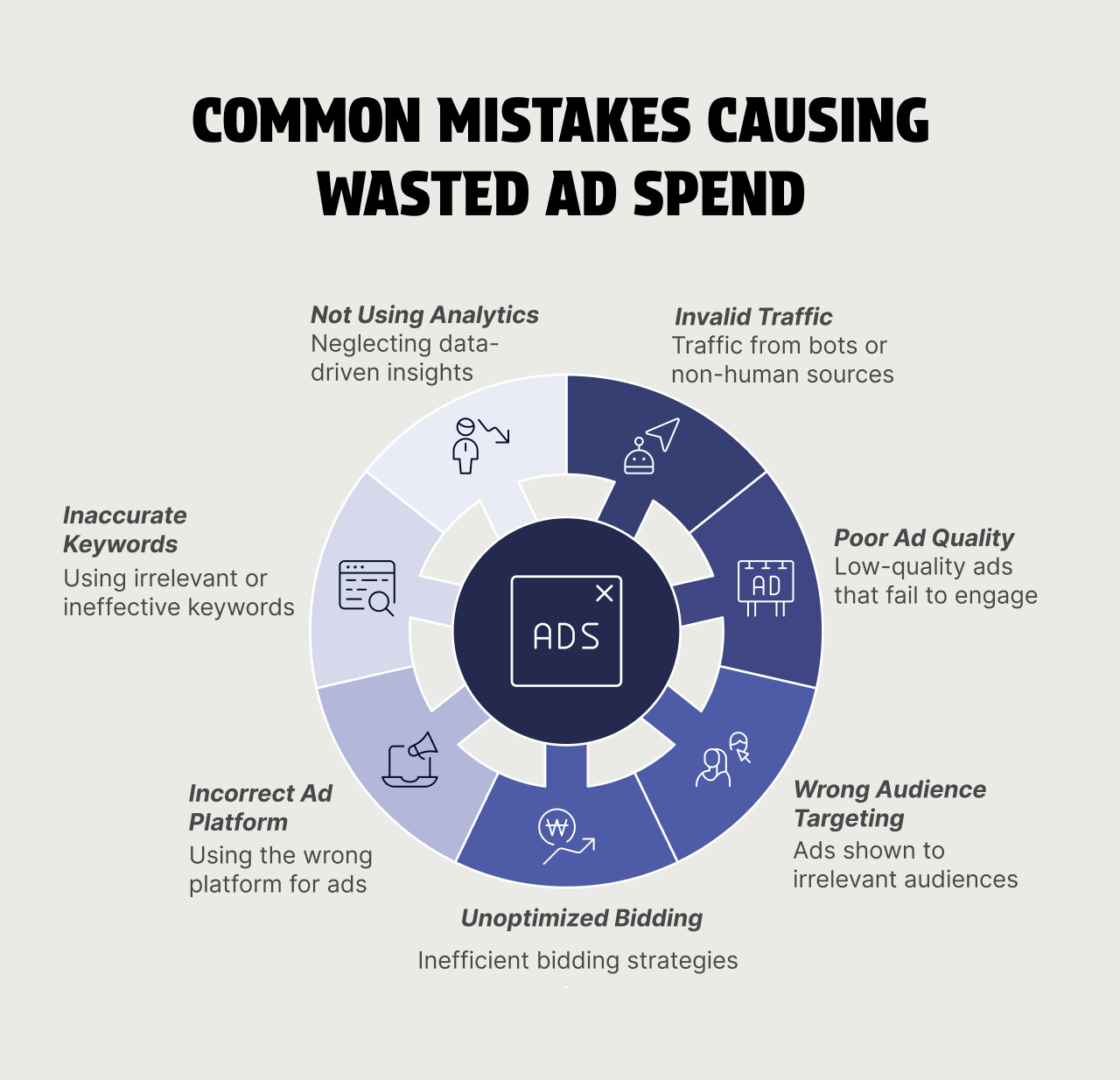
1. Invalid traffic
Companies are increasingly adopting data-driven methods to analyze the quality of their ad traffic. One major factor impacting ad effectiveness is the widespread problem of illegitimate, low-quality traffic.
Advertisers are concerned about this because they receive a lot of false bot traffic that depletes their budgets.
2. Poor Ad Quality
Long headlines, mismatched landing pages, and substandard ad creatives can all result in a significant waste of money. Although brands can receive impressions and clicks, the conversion rate is still quite low.
Ads without a clear CTA button and low-quality images perform poorly and impact the campaign's overall quality score. Repeatedly using the same ad wording might also result in unproductive traffic and a decline in interest from prospective customers.
With Kappax, you can get highly engaging display ad creatives with interactive elements built in. With us, you can save money on your ad spend.
Also Check: Best Ad Creation Platforms
3. Wrong Audience Targeting
The ad’s money gets wasted on clicks or impressions that won't result in conversions if the advertisements are displayed to people who are unlikely to be interested in your goods or services. Not analyzing the audience segment and targeting a broad audience can be very expensive.
Note that, Irrelevant traffic from users who aren't interested in what you have to offer doesn’t count as real traffic
4. Unoptimized Bidding
The wrong bidding approach can lead to overspending on low-converting advertising or bidding on keywords that aren't yielding results.
Even if you're bidding too high or using an automated bidding strategy ineffectively, it can imply the risk of paying more than necessary for clicks that don't convert.
5. Incorrect Ad Platform
Selecting the wrong platform or ad format is an expensive error that can drain the advertising budget. Advertising on platforms is not a good idea when the target audience is limited.
Ignoring the fact that every platform has an ad format that works best for its audience will result in low engagement and pricey advertising. Irrelevant ad placement in display ads might result in unnecessary clicks and wasted money.
6. Inaccurate Keyword Targeting
According to industry standards, a successful campaign requires the ad to be triggered only by relevant search queries to maintain the average CTR.
Spending money on search ads is a big mistake when selecting low-volume, broad-match, and unfitting keywords that don't support the campaign's goal. Not filtering out negative keywords can attract lots of unwanted clicks at the cost of your budget.
7. Not using Advanced Analytics Tool
In times of astounding digital advertising growth, It is counterproductive to the business's overall performance to not use Google Analytics or other data-backed tools.
If you're not accurately measuring conversions, you may not be aware that your marketing efforts are not yielding the expected results. This could lead to you spending more money on ineffective campaigns. You’ll also miss out on monitoring the return on ad spend (ROAS) for each ad campaign.
What is ROAS?
Return on Ad Spend (ROAS) is a pivotal metric to measure ad campaigns' effectiveness and success. It calculates the return (profit in terms of sales, conversions, and end goal) generated with the money spent.
It is one of the most crucial metrics for any advertiser to evaluate the campaign’s efficacy.
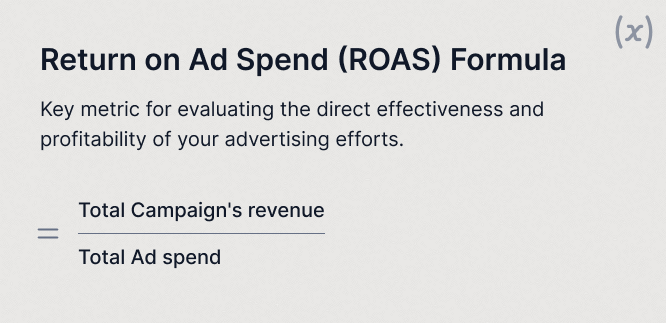
In a nutshell, ROAS indicates how much revenue a brand earns on each dollar spent on advertising. Businesses often end up spending a lot of money on campaigns that aren't producing the desired results if you're not optimizing for ROAS.
How to Calculate ROAS?
Example: If the total revenue earned from any campaign is $500 for which the total spend was $100, then ROAS can be calculated as:
- ROAS = 100 = 5:1, or you made a profit of $5 on each dollar.
And the ROAS rate will be 500%.
The higher the ROAS, the better the campaign’s performance. A ROAS rate between 200% and 400% is considered good for both Google and social media ads.
ROAS vs ROI - What’s the difference?
ROAS (Return on Ad Spend) measures the effectiveness of an individual campaign. It evaluates the profit generated from the ad with respect to the ad spending. It allows real-time optimization in the ads and budget distribution.
ROI (Return on investment) measures the overall performance of the business in terms of finance and budget. It also counts extra expenditures such as materials, workforce, marketing, and more.
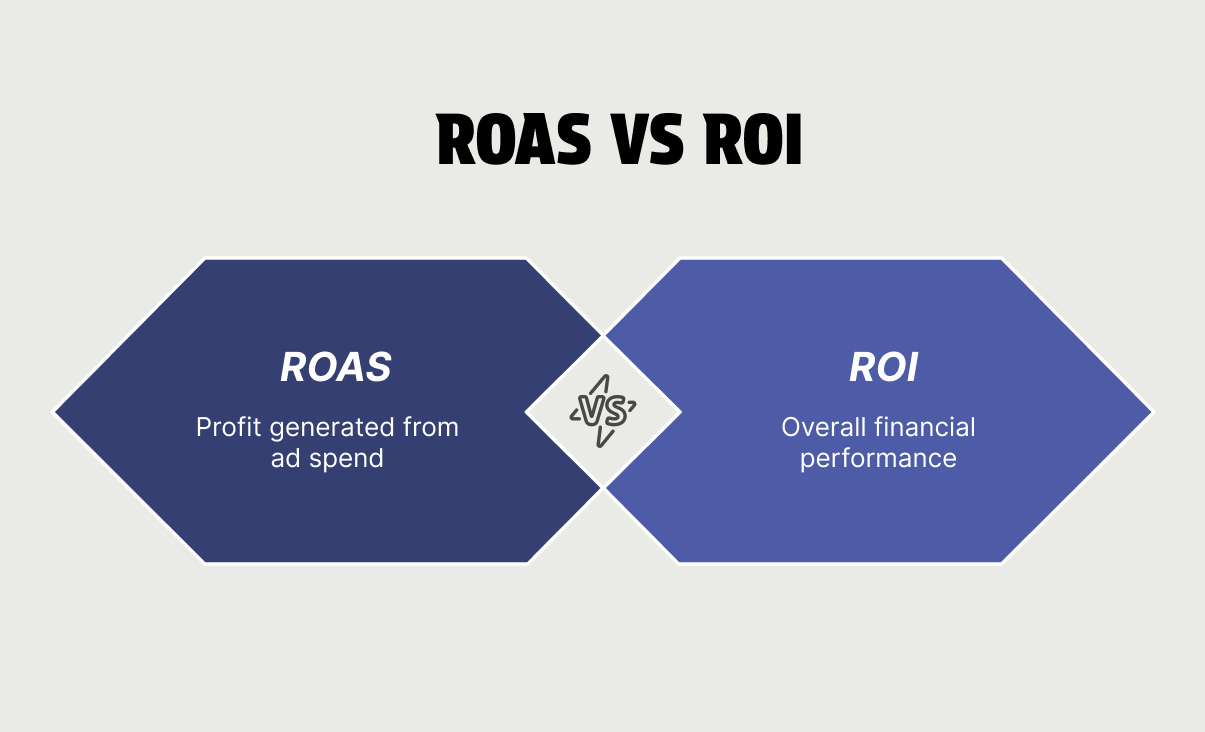
Let's understand with the help of an example:
A business spends $200 on a campaign and earns revenue of $1000 from that. In creating that campaign, there is an additional $400 cost incurred in equipment, product development, and operation.
- Total campaign’s revenue =
$1000 - Total Ad Spend =
$400 - Net Profit =
$1000 - ($400 +$400) =$200 - Total Expenditure =
$400 +$400 =$800
Hence
ROAS = $1000/$200 = 5:1
whereas,
ROI = Net Profit x 100 / Total Expenditure (%)
= $200 / $800 X 100% = 25%
8 Proven Strategies to Reduce Wasted Ad Spend & Boost ROAS
Evaluating the wasted ad spend and optimizing it accordingly can be fruitful for the business's overall ROI. These are the tested strategies that can help you get the most out of your advertising investment to flourish more:
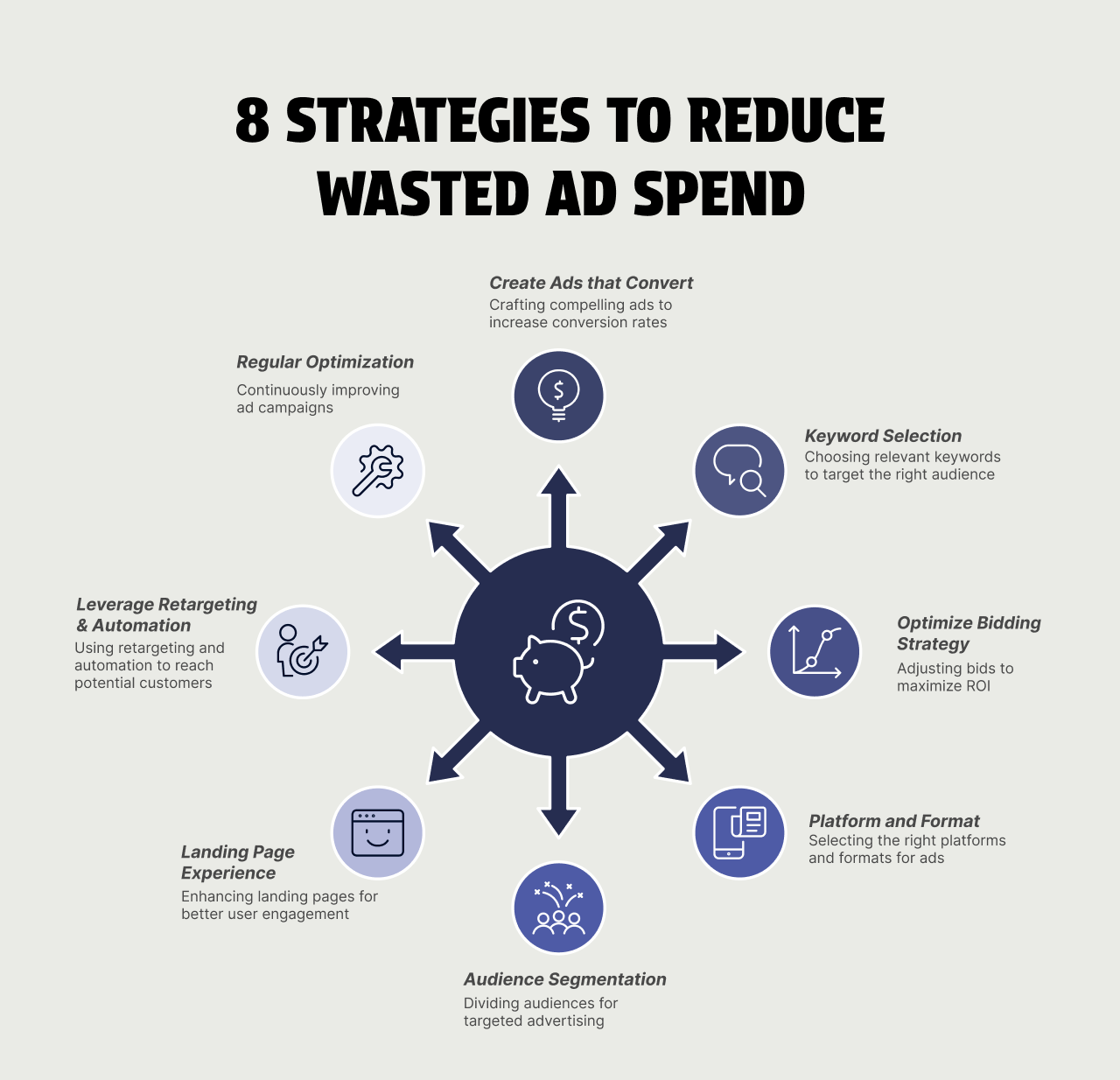
1. Create Ads that convert
The ad copy is one of the most crucial aspects of an ad. It should be able to deliver the right message to the audience vividly. Creating engaging images or videos can help increase the ROAS to a significant level.
5 Tips to Write Engaging Ad Copies
- Headlines, descriptions, and visual content shouldn’t be too long.
- Headlines should align with the campaign’s goal and user intent.
- A call-to-action button has giant potential to increase the returns on the ads.
- Use CTAs based on the type of ad and desired action you want from the customer.
- Use high-quality, engaging ads with a pinch of personalization to increase engagement.
2. Use Smart Keywords
Keywords are broadly classified into three types: broad match, phrase match, and exact match keywords in Google Ads. Selecting keywords with high search and broad match in the keyword types can deplete your budget.
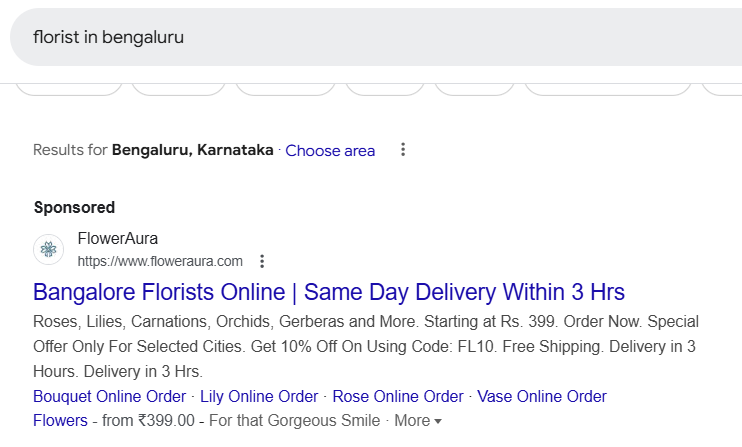
5 Tips for Effective Keyword Selection
- Using broad match keyword types can get many unwanted clicks, leading to a decrease in the ROAS rate.
- Use phrase-match keywords by adding specific locations, products, services, or goals.
- Test and find out the exact match keyword type for your ad.
- The ads will only appear if the user searches those sets of words. This can reduce wasted ad spend and increase ROAS.
- Don’t forget to add negative keywords if you want the ad to be shown only with the relevant searches.
3. Optimize Bidding Strategy
Choosing the right bidding strategy provided by Google and Facebook ad platforms can be a game-changer. They offer bidding strategies based on the campaign’s goal.
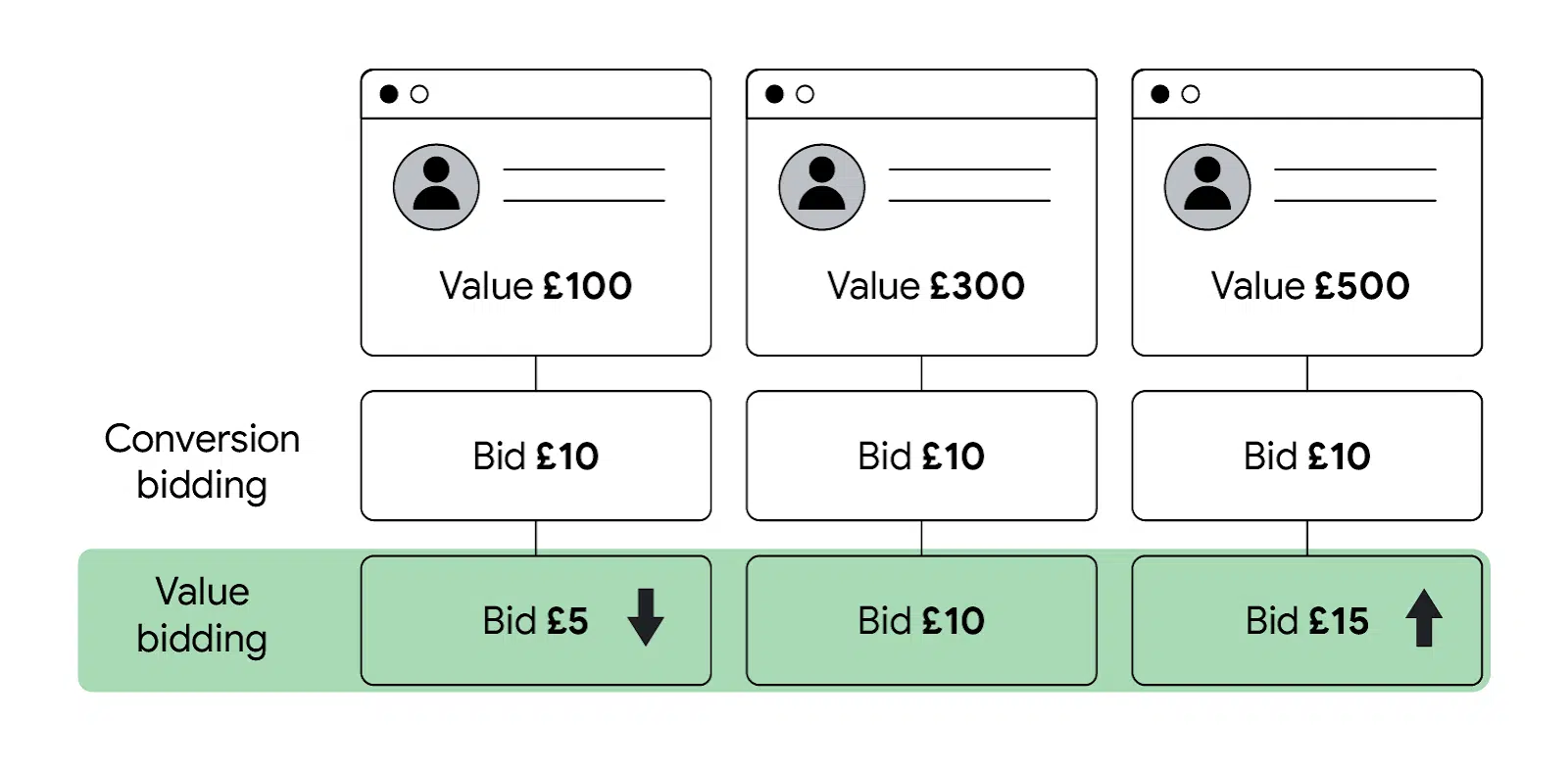
Right Bidding Strategy to reduce Wasted Ad Spend and increase ROAS
-
Use the Target ROAS smart bidding strategy in the Google ads. To optimize campaigns for conversions or conversion value, smart bidding leverages AI and machine learning to manage bids on behalf of advertisers. Likewise, use a cost-per-result goal bidding strategy in the Meta ads.
-
With Google Ads' attribution models, you can determine which ad interactions result in conversions and use this information to optimize your advertising, ad groups, campaigns, and keywords.
-
Distributing the ad budget wisely guarantees that every dollar is being used to its full potential. Increase or decrease the bids based on the conversion rate, day, and time by analyzing historical data.
4. Pick the Right Platforms & Formats
Ads must be showcased considering the ad platform’s supported format. Choosing the right format and platform can improve the effectiveness and ROAS of the campaign.

How to Choose the Right Ad Format & Platform?
- Choose interactive display and banner ads on the relevant sites if the campaign’s goal is brand or product awareness.
- Choose image and video ads on social media channels if the campaign’s goal is conversion, lead generation, and traffic.
- Choose Mobile Ads for Instagram and TikTok if the audience's age demographic is young.
5. Segment Your Audience
The right way to reduce wasted ad spend and increase ROAS is by catering to the right audience segment. Understanding audience behavior, interests, and preferences holds a special value for advertisers.
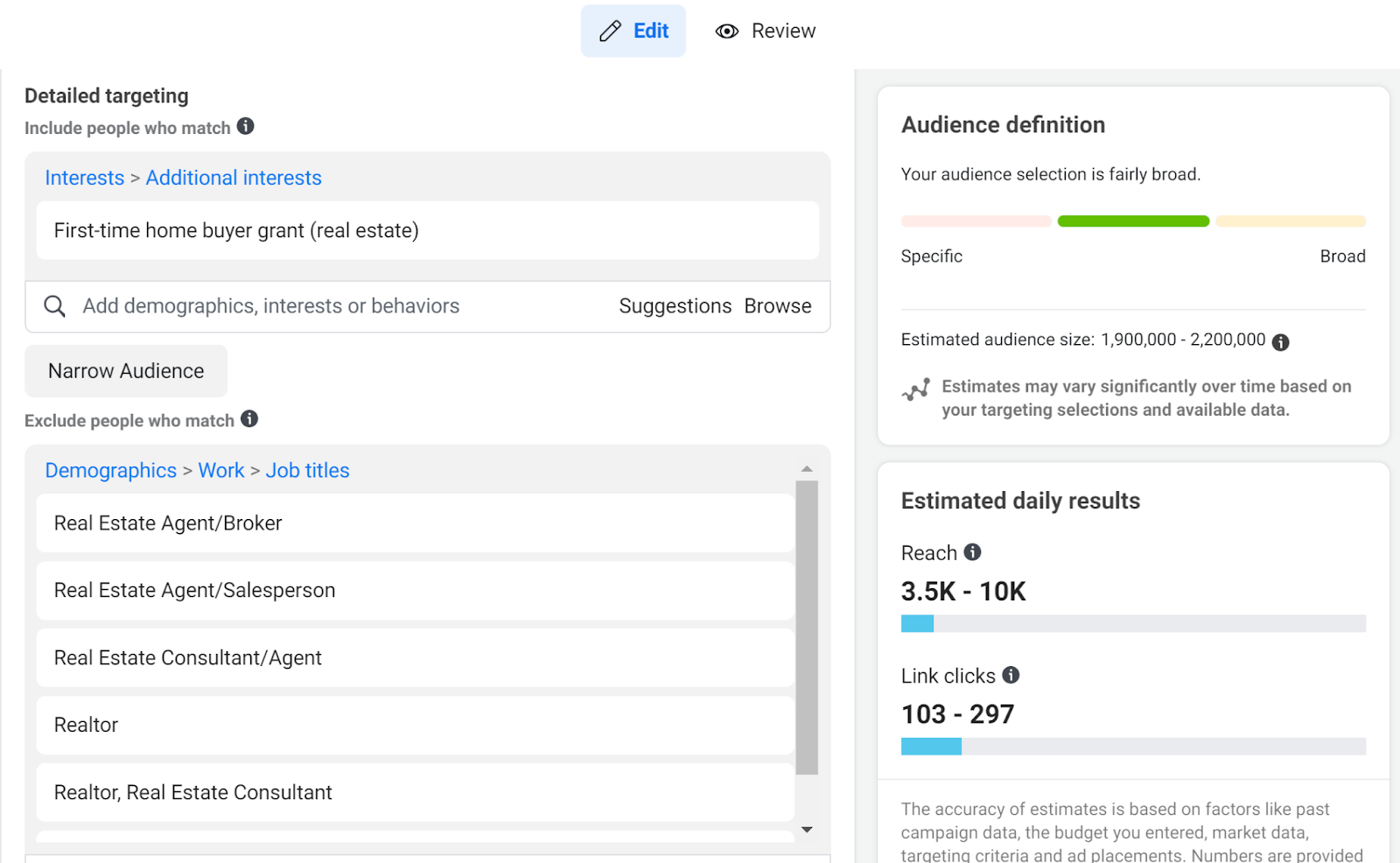
Best Practices for Refining Audience
- Avoid displaying advertisements to unqualified or irrelevant audiences, such as those who are not in your target demographic, by using negative targeting and exclusions.
- Filter your audience according to their interests, location, demographics, and behavior. This increases the possibility of an increase in ROAS.
- Segment audiences who have demonstrated intent by looking at similar products, using particular keywords, or adding items to their cart but not completing the transaction.
- You can leverage Meta's powerful AI to identify your campaign's target audience using Meta Advantage+ audience. It finds your audience by analyzing pixel and past interaction data.
6. Improve Landing Page Experience
Even if you excel at all the above-mentioned advertising strategies, landing page experience is a deciding factor for conversion. You may earn traffic, but it doesn’t guarantee sales, which reduces the ROAS rate for the campaign.
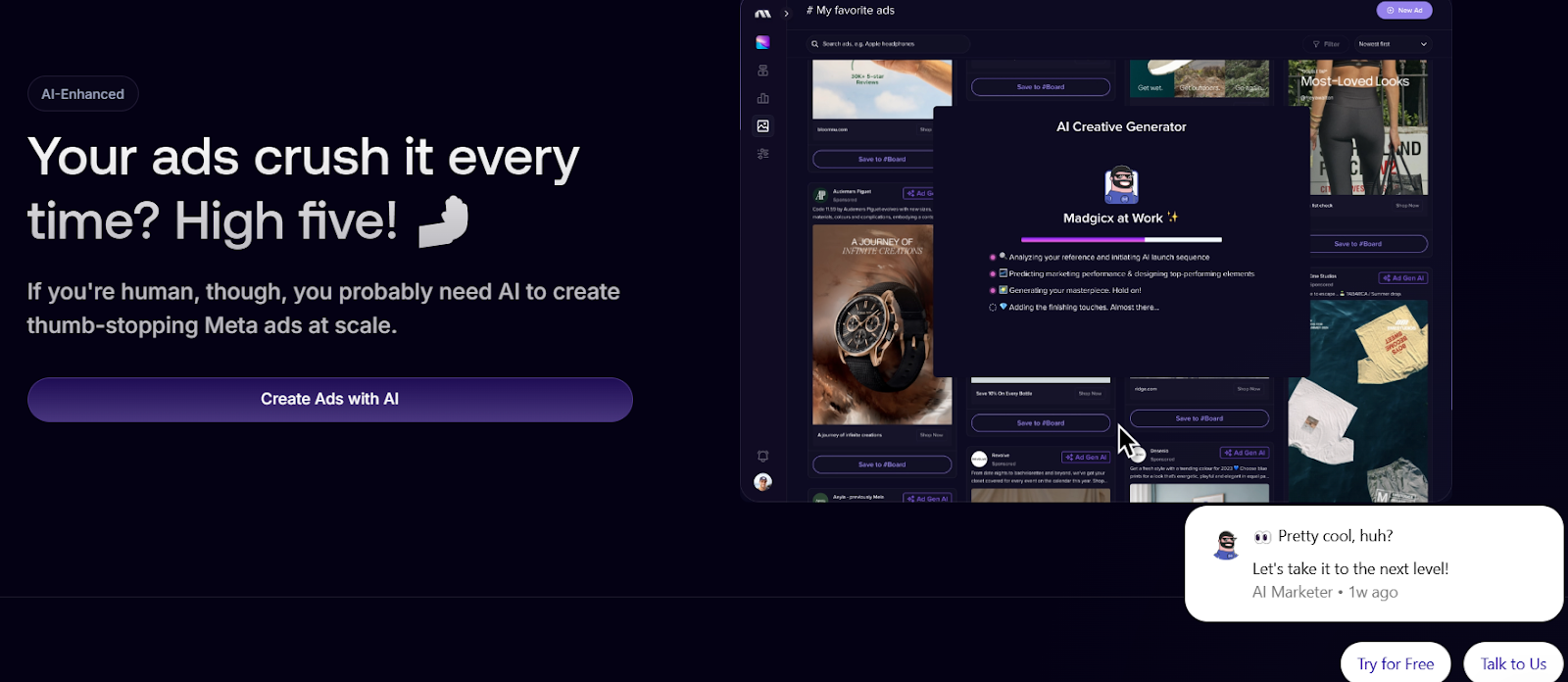
How to make the Landing Page Experience Better?
- The landing page must have all the details that users might want to know after clicking on the ad.
- It should be easy to navigate, mobile-friendly, and engaging so that the chances of conversion increase.
- The checkout process shouldn't be cumbersome and tacky, and customers should have a smooth overall website experience with little loading time.
7. Use Retargeting & Automation
Creating retargeting campaigns can be a good strategy to attract back visitors who did not convert the first time. With the correct follow-up email campaigns and FB retargeting campaigns, these users are more likely to convert and assist in improving the ROAS.
- Run retargeting ads for customers who have interacted with your site, added products to the cart, or shown an interest in any particular product category.
- Remarket the offerings with some discounts to encourage conversions from existing customers.
- The use of dynamic retargeting can be very fruitful as it shows personalized ads as per the users' behaviors and interests.
8. Optimize Regularly
Keeping track of the campaign’s performance with the help of analytics tools is very essential. It provides the scope of optimization required in the ad, keywords, or targeting.
- Monitor the campaigns’ outcome regularly, and keep track of metrics like CPC, CPA, CTR, and ROAS.
- Experiment with new ad copies, keywords, ad placements, and bidding strategies. Optimizing the non-performing campaign can show some good results with these techniques.
- Even after optimizing, nothing works, so pause those campaigns and dedicate the budget to the better-performing ad campaigns.
These are some of the strategies an advertiser needs to consider to reduce ad spend and maximize ROAS.
Advanced Tips to Cut Wasted Ad Spend and Boost Returns
- Utilizing A/B testing is essential for optimizing ad performance to raise ad ROAS. You can figure out which combinations of calls-to-action (CTAs), messages, and ad creatives work best for your target audience and increase conversions by testing different variants of the ads.
- By using dynamic ads, you can boost relevance and engagement by automatically displaying users relevant content based on their previous actions. Programmatic advertising can boost an ad’s performance with automated tools and enhanced targeting precision.
- Furthermore, integrating cutting-edge AI from platforms like Google and Meta can maximize the effectiveness of ad placements and bidding strategies.
- Implementing frequency capping also prevents ad fatigue by limiting how often the same user sees your ad. By implementing bid caps, you may remain competitive without going over budget.
- By fostering client relationships and delivering value over time, concentrate on increasing user retention to further increase ROAS.
- A more individualized and relatable experience can be produced by collecting customer feedback and using it in advertising text or product messages. This will promote recurring business and reduce the wasted ad spend.
KappaX - Your Solution to reducing Ad waste & increase ROAS
With its innovative and engaging ads, Kappax could assist in minimizing wasted ad expenditure while also increasing ROAS. Book a demo to understand how we create captivating display and video ads for your website that enhance the user experience.
We can transform a basic concept into a dynamic, multi-channel interactive experience. We provide our clients in the retail, advertising, healthcare, and financial sectors a one-stop shop for engagement-boosting solutions.
Final Thoughts
You can minimize wasted ad spend and increase your return on investment by putting these techniques into practice and making more informed decisions based on data.
The ROAS metric is dynamic. It must be positioned in relation to industry standards and more general business objectives. Marketers can optimize advertising budget allocations, improve strategy, and achieve long-term profitability by regularly evaluating ROAS in combination with other marketing indicators such as return on investment and customer acquisition cost.
